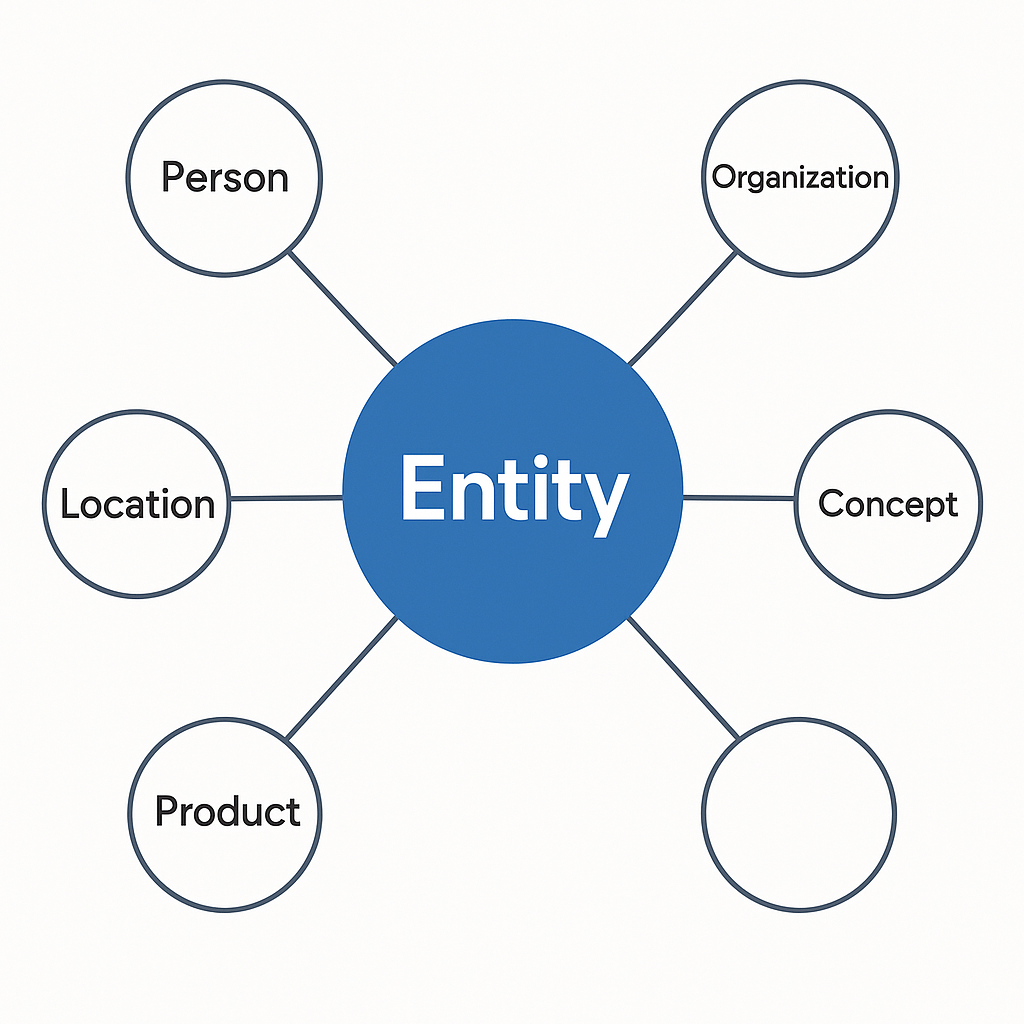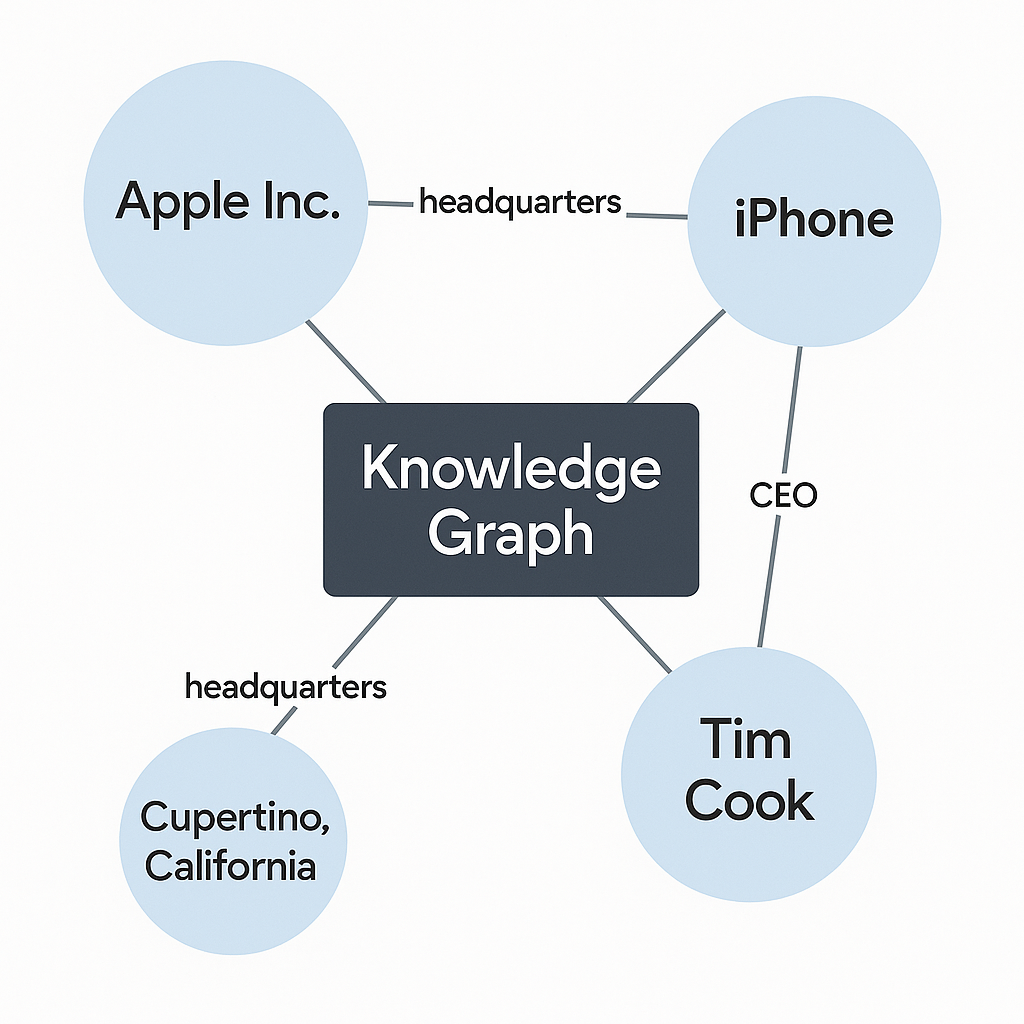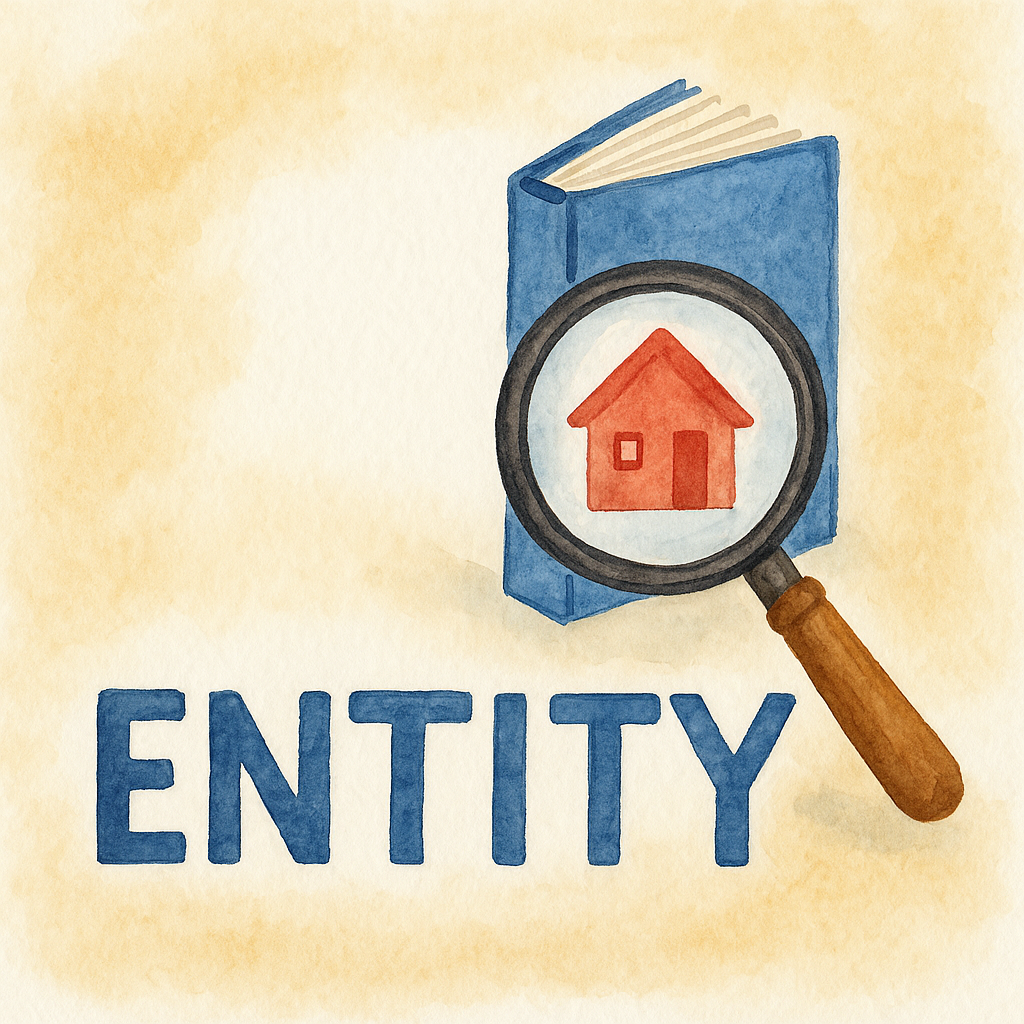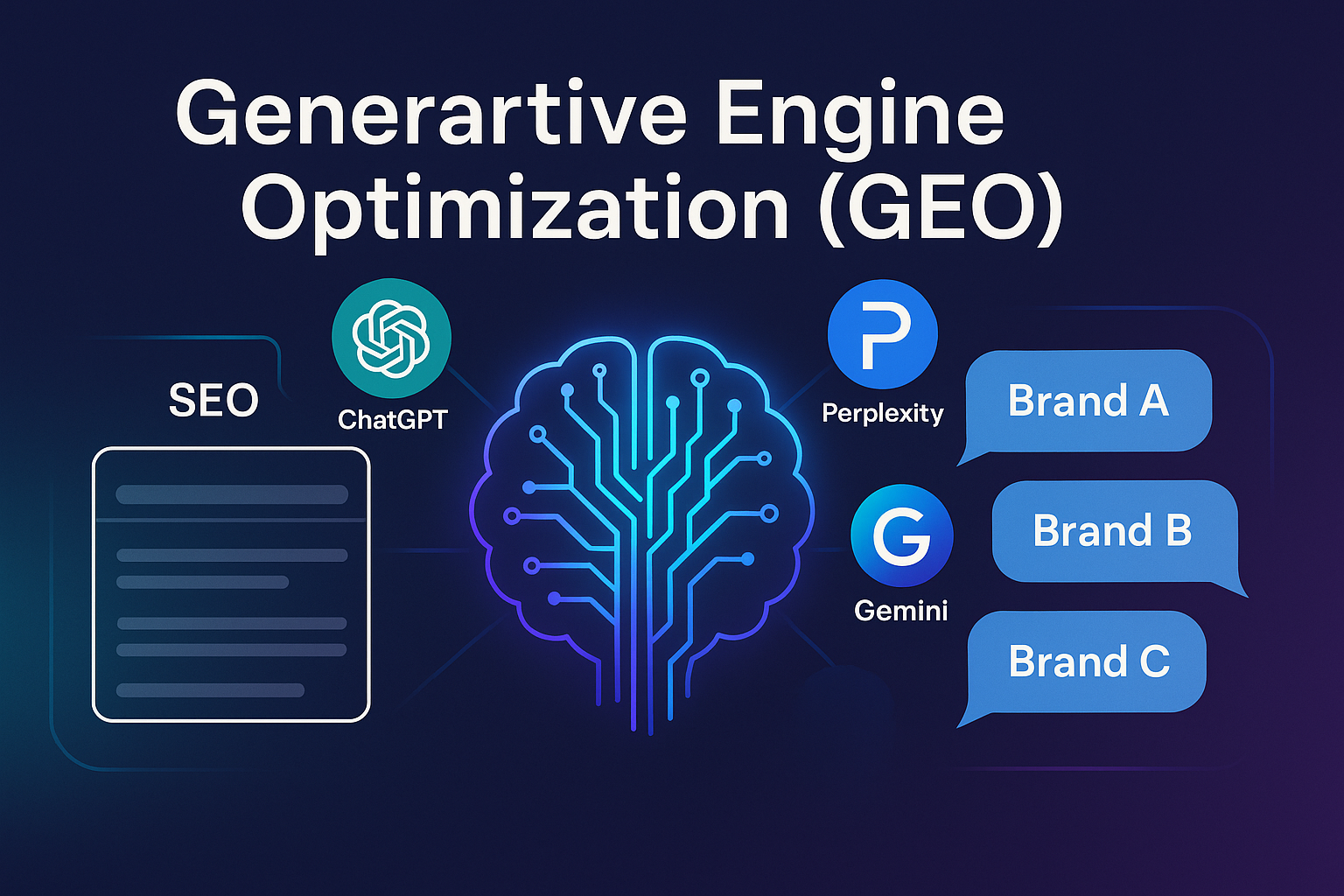When you search online or ask an AI tool a question, you’re not just dealing with “words.” Behind the scenes, search engines and AI systems think in terms of entities and how those entities are connected in a knowledge graph. Understanding these concepts is key for businesses and marketers who want their brand to appear in AI-generated answers.
1. What Is an Entity?
An entity is a “thing” that can be clearly defined and distinguished from other things.
It could be:

- A person (Taylor Swift, your local dentist)
- A place (Disneyland, a park in your town)
- An organization (Apple Inc., the restaurant down the street)
- A concept (climate change, digital marketing)
- Even a product (iPhone 16, Nike Air Force 1s)
The important part is that an entity is unique and unambiguous. Search engines and AI don’t just see the letters “apple” and wonder if you meant the fruit or the tech company—they use context and connections to know the difference.
Think of an entity as a profile in a giant digital address book. Once defined, it exists as a “node” that other things can connect to.
2. What Is a Knowledge Graph?

A knowledge graph is a big web of entities and the relationships between them.
Google’s Knowledge Graph, for example, connects over 500 billion facts about 5 billion entities. AI tools like ChatGPT, Gemini, and Perplexity also rely on knowledge graphs (or similar systems) to organize information.
These connections matter because they give meaning:
- Apple Inc. is connected to iPhone, Tim Cook, and Cupertino, California.
- Yellowstone National Park is connected to Wyoming, Old Faithful geyser, and grizzly bears.
When you ask a question, the AI doesn’t just scan words—it follows these connections to deliver a smart answer.
3. Real-World Examples of Entities in Knowledge Graphs
Let’s bring this to life with a few examples:
Example 1: Apple Inc. (Global Brand)
- Entity: Apple Inc. (organization)
- Connections:
- Products → iPhone, iPad, MacBook
- CEO → Tim Cook
- Location → Cupertino, California
- How it works: When you type “Apple CEO,” Google doesn’t match keywords—it pulls the entity connection between Apple Inc. and Tim Cook.
Example 2: Local Restaurant (Small Business)
- Entity: “Rigby Grill” (let’s say it’s a family restaurant in Rigby, Idaho)
- Connections:
- Location → Rigby, Idaho
- Menu → hamburgers, fries, milkshakes
- Category → American restaurant
- How it works: If someone asks, “best burger in Rigby,” the system can connect “burger” with restaurants in Rigby—Rigby Grill becomes a relevant answer.
Example 3: Local Park
- Entity: Porter Park (Rexburg, Idaho)
- Connections:
- Features → carousel, picnic areas, splash pad
- Location → Rexburg, Idaho
- Category → city park
- How it works: When a parent asks, “Where’s a park in Rexburg with a splash pad?”—AI follows the entity connections to surface Porter Park.
In every case, the system understands things (entities) and how they relate, not just the words you typed.
4. Entities vs. Keywords
This is where things get fun.
- Keywords are just words or phrases people type in (“best hiking trails near me”).
- Entities are the meanings behind those words (“hiking trails” as a category of location, “me” as your geographic location).
In traditional SEO, you stuffed your page with the right keywords. But AI tools don’t care how many times you say “best tacos in town.” They care if they understand your business as an entity that sells tacos, located in a certain place, with a reputation (reviews, mentions, links).
In short:
- Keywords = surface level.
- Entities = deeper meaning.
That’s why AI relies more on entities. It’s smarter and less trickable.
5. How Businesses Can Benefit from Entities
If you want your business to appear in AI-generated answers, you need to think entity-first:
- Get listed consistently: Make sure your business name, address, and category are accurate across Google Business Profile, Yelp, Facebook, and other directories. This helps define your entity.
- Connect the dots: Add structured data (schema markup) to your website—things like “LocalBusiness,” “Restaurant,” “Product.” This gives search engines explicit connections.
- Be mentioned: Mentions on other sites, news articles, or blogs strengthen your entity by showing it exists in the real world.
- Show expertise: Publishing clear, well-structured content about your niche connects your entity to broader concepts.
Imagine you run “Rigby Grill.” By defining your entity well:
- AI knows it’s a restaurant in Rigby, Idaho.
- It connects you to “burgers,” “family dining,” “local restaurants.”
- So when someone asks an AI tool, “Where can I get a family-friendly burger place in Rigby?”—you’ve got a much better shot at being the answer.
Key Takeaways
- Entities are unique, definable “things” like people, places, organizations, or concepts.
- Knowledge graphs connect entities and give meaning to their relationships.
- Examples include global brands (Apple Inc.), local restaurants, and community parks.
- Entities vs. keywords: Keywords are words; entities are meanings. AI tools focus more on entities.
- Business impact: By strengthening your entity (accurate listings, schema markup, mentions, content), you increase your chances of showing up in AI-powered answers.
👉 In short, the future of digital marketing is entity-driven. Businesses that understand how they “exist” in a knowledge graph will have the advantage in an AI-first world.



